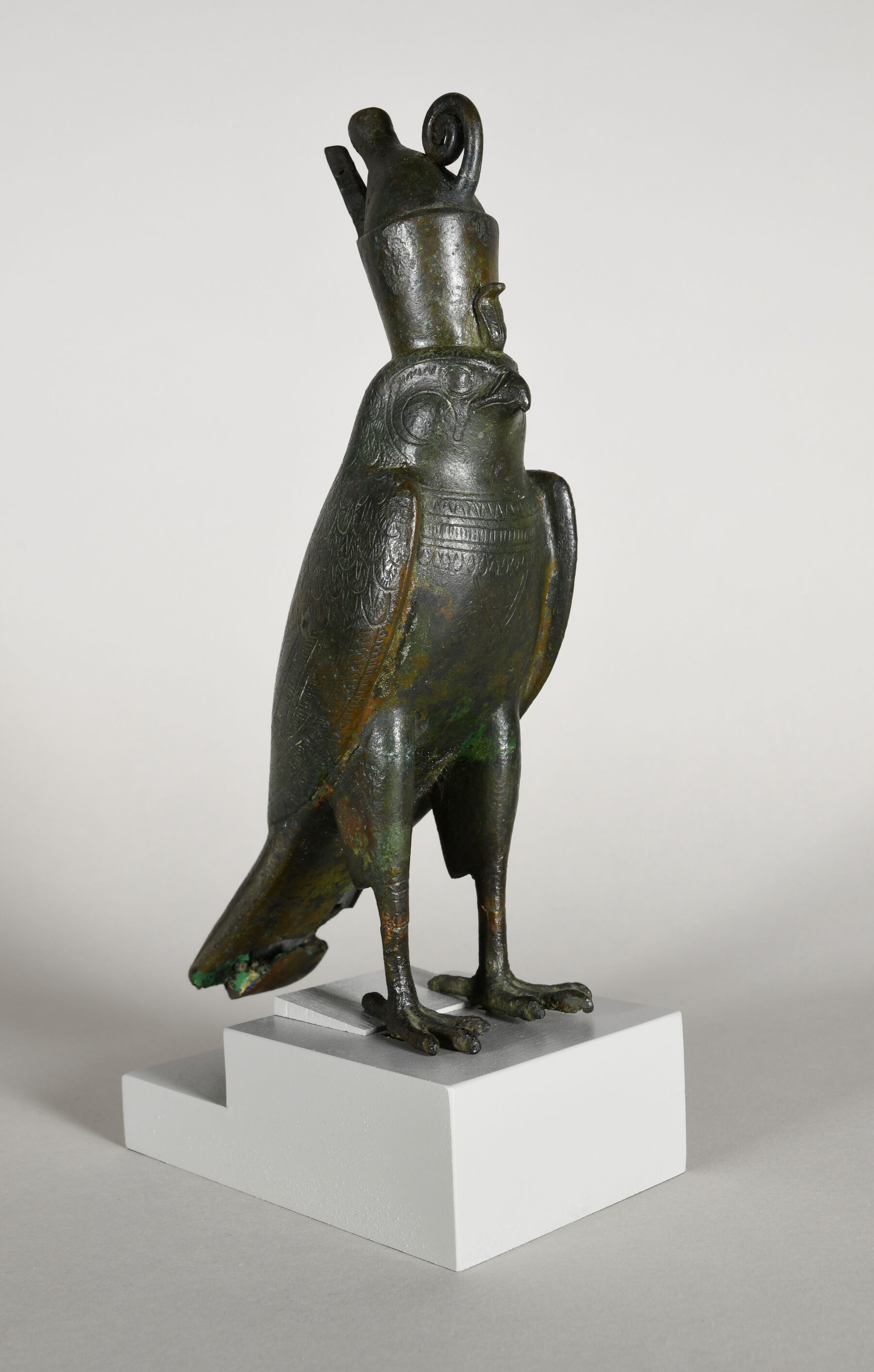Horus was the sky god associated with ancient Egyptian kingship. Depicted as a falcon, Horus wears the double crown of Upper and Lower Egypt with a uraeus (a rearing cobra) relating to divine kingship and protector of the living king.
This hollow-cast figurine was created by the lost-wax method. First, a clay mold was built around a sacrificial wax model with a clay core. The wax model was then scored and punched to create surface details and textures. After the mold investment set, the wax melted out to form a cavity into which the metal alloy was poured. Once the alloy cooled and solidified, the mold investment was broken to free the metal figurine.
The falcon’s distinctive eye markings, neck pectoral with hanging pendant, and individual feathers on the back and wings are carefully engraved. The incised decoration shows the high quality of bronze casting achieved during the Late Period (664–332 BCE).1 The legs were cast separately from the body, with tangs to attach the claws to a base. The crown is not of ancient origin.
MH
-
Cf. WAM 54.2115, mid 8th–late 4th century BCE. ↩︎
